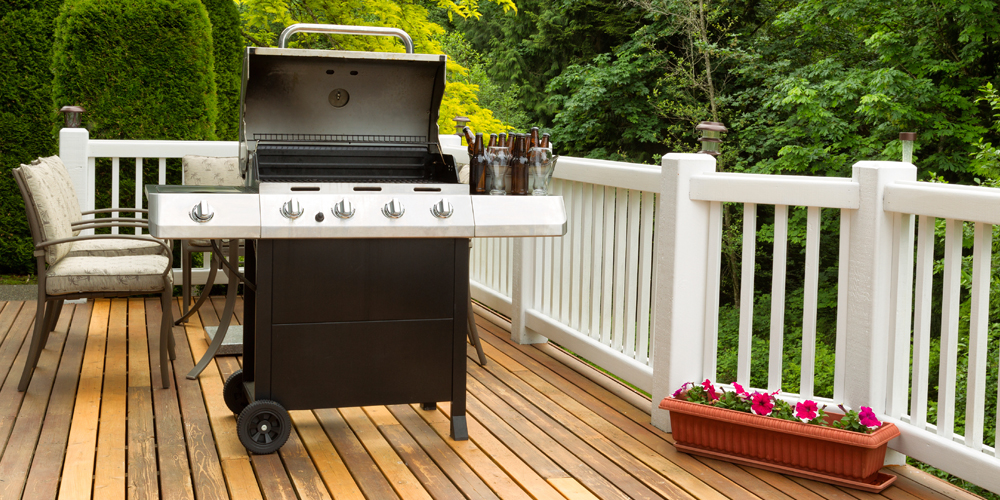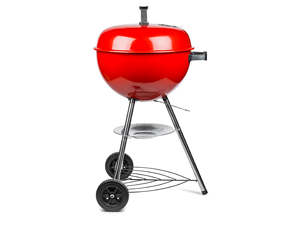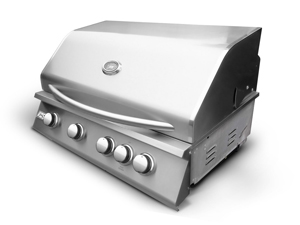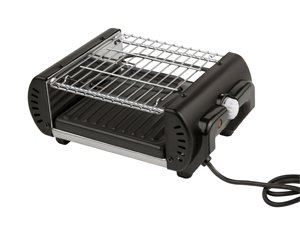



One of the best ways to enjoy the outdoors is firing up the grill to cook a delicious meal. From steaks and chicken to vegetables, nothing beats the taste of your favorite food grilled over an open flame. With a wide assortment of outdoor grills available, LuxeDecor offers a convenient guide to help select the best grill for your outdoor space and purposes.
The most important decision when buying a grill is determining what type of fuel is used to power your grill. There are five major types of grills that each use different fuel types.

The most common and popular type of grill used by people are charcoal grills. The most familiar model is the kettle grill, which is a charcoal grill that consists of a charcoal pan shaped like a steel kettle bowl that holds burning charcoal. A wire rack (or grate) is balanced on top to lay ingredients over. Different models may include leg supports, lids, and come in a variety of shapes from round to rectangular.

Another popular choice for grills is a liquid propane grill which is gas-fueled. Typical models consist of a cart grill design with a grill unit attached to a wheeled frame that holds a propane fuel tank. Other features, such as side burners and side tables, may be attached to the frame.

Natural gas grills are another type of gas-fueled grill. They require installation of a gas line which means most natural gas fueled grills are built-ins. These types of grills first, heats coal or porcelain briquettes, where heat is then transferred to the surface of the grill.

Electric powered grills plug into a standard wall outlet and use an electric heating element to cook food. Electric grills are ideal for settings that are constrained by fire and safety regulations.

A smoker is a container that creates smoke to slowly cook food indirectly at low temperatures over a long period of time. Smokers are usually vertical standing units that open with a door where food can be hung from the top of the unit on hooks, or placed on multiple grates.

These hybrid cookers are fueled by hardwood pellets that offer both the benefits of charcoal and gas grills. An induction fan circulates air from outside, heating wood pellets that create a convection cooking process. The pellets release smoke as they burn.
When determining the perfect size grill to suit your needs, take special consideration of your cooking habits to help establish the size grill you’ll need. The size of your grill is determined by two factors: the amount of space the grill unit occupies, and the surface area designated for cooking.
Primary square inches specifies the size of the surface directly over the heating element for full temperature cooking.
Secondary square inches refers to the size of ancillary surfaces for cooking, such as elevated warming grates and side burners.
Grilling Burgers: An average burger that measures 4-inches in diameter typically requires around 20 inches of cooking space. That means a 200-sq. inch grill will be able to accommodate 10 burgers at once.
Grilling Racks of Ribs: On average, a rack of ribs can measure 100-sq. inches, so if you are considering grilling multiple racks, you’ll need a larger size grill.
Consider Number of People: Two small grills for a large party will prove inconvenient, however a large grill that is less frequently used will prove troublesome because it will consume fuel too fast.
Grill power is measured in BTUs (British thermal units), or output of heat production. As a general rule, the largest the grilling unit, the more BTUs are required, while smaller grills will require less. Higher BTUs will benefit those who are grilling for large groups of people, or cooking a large quantity of food. Be sure to compare the number of BTUs and features before deciding how much fuel power is required for your needs.
Grills come in a variety of heat conducting materials that can withstand high temperatures of heat for cooking. They include ceramic, stainless steel, cast aluminum, and cast iron. You’ll find stainless steel grills are the standard material used for most type grills.
Burners allow you to control the amount of direct or indirect heat used while grilling.
A side burner provides extra cooking surface to cook food items that require indirect heat.
Available in stainless steel or porcelain enamel, grates provide surface area to grill food items.
The latest in outdoor cooking technology, infrared burners achieve extremely high heat levels for quick searing for gas-fueled grills.
A push button allows users to quickly ignite a grill without the use of lighter fluid.
Rotisseries rotate food for even distribution of heat that cooks bulky food items.
Thermometers are essential in monitoring cooking temperatures,and can usually be found on the hood or body of a grill.



